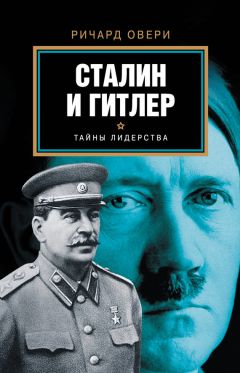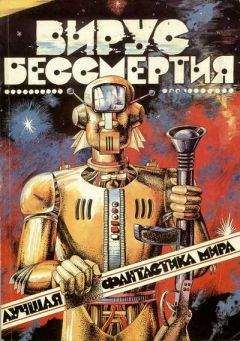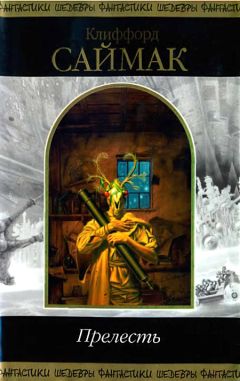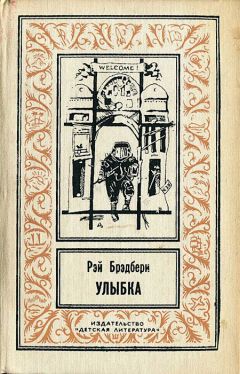29. Baynes, Hitler’s Speeches, vol. i., p. 220.
30. J. Biesemann Das Ermächtigungsgesetzt als Grundlage der Gesetzgebung im nationalsozialistischen Staat (Münster, 1985), pp. 250–53.
31. H. Kaden and L. Nestler (eds) Dokumente des Verbrechens: aus Akten des Dritten Reiches 1933–1945 (3 vols, Berlin, 1993), vol. i, p. 29, Verordnung zum Schutz von Volk und Staat, 28 February 1933; see too Biesemann, Das Ermächtigungsgesetz, pp. 253–63.
32. Kaden and Nestler, Dokumente des Verbrechens, vol. i., p. 31; Broszat, Hitler State, p. 329.
33. Kaden and Nestler, Dokumente des Verbrechens, vol. i, pp. 34–8; Broszat, Hitler State, pp. 330–31. On the courts H. Koch In the Name of the Volk: Political justice in Hitler’s Germany (London, 1989), p. 4; H. Schmidt ‘Beabsichtige ich die Todesstrafe zu beantragen’: die nationalsozialistische Sondergerichtsbarkeit im Oberlandesgerichtsbezirk Düsseldorf 1933 bis 1945 (Essen, 1998), pp. 27–9; B. Dörner ‘Heimtücke’: Das Gesetz als Waffe (Paderborn, 1998), pp. 20 ff.
34. Koch, In the Name of the Volk, pp. 45–8.
35. I. Müller Hitler’s Justice: the Courts of the Third Reich (London, 1991), pp. 86–7.
36. G. Werle]ustiz-Strafrecht und polizeiliche Verbrechenskämpfung im Dritten Reich (Berlin, 1989), pp. 533–42; U. Herbert Best: Biographische Studien über Radikalismus, Weltanschauung und Vernunft 1903–1989 (Bonn, 1996), pp. 150–51, 169. See also J.Tuchel’Dimensionen des Terrors: Funktionen der Konzentrationslager in Deutschland 1933–1945’, in D. Dahlmann and G. Hirschfeld (eds) Lager, Zwangsarbeit, Vertreibung und Deportation (Essen, 1999), p. 374, who estimates that 80,000 were held in protective custody for some period in 1933.
37. S. Lorant I Was Hitler’s Prisoner (London, 1935), pp. 32–42, 275–8.
38. Broszat, Hitler State, p. 333; H.-U. Thamer Verführung und Gewalt: Deutschland 1933–1945 (Berlin, 1986), p. 385.
39. Kaden and Nestler, Dokumente des Verbrechens, vol. i, pp. 183–4, Bestimmungen zur Durchführung von Exekutionen in ‘Sonderbehandlungsfälle’, 6 January 1943; N. Frei National Socialist Rule in Germany: the Führer State 1933–1945 (Oxford, 1993), pp. 114–15.
40. Broszat, Hitler State, p. 342.
41. J. Noakes and G. Pridham (eds) Nazism 1919–1945: a Documentary Reader (Exeter, 1984), p. 519.
42. A. Antonov-Ovseyenko The Time of Stalin: Portrait of a Tyranny (New York, 1981), pp. 211–13.
43. S. G. Wheatcroft The Scale and Nature of German and Soviet Repression and Mass Killings’, Europe – Asia Studies, 48 (1996), pp. 1332–3. A. Nove ‘Terror Victims – Is the Evidence Complete?’, Europe – Asia Studies, 46 (1994), pp. 535–7.
44. Getty and Naumov, Road to Terror, p. 588; J. O. Pohl The Stalinist Penal System (Jefferson, NC, 1997), p. 8.
45. Pohl, Stalinist Penal System, pp. 11, 15; E. Bacon The Gulag at War: Stalin’s Forced Labour System in the Light of the Archives (London, 1994), pp. 28–30.
46. Nove, ‘Terror Victims’, p. 536; GUlag deaths in Pohl, Stalinist Penal System, pp. 48–9.
47. On estimates for German camps see Wheatcroft, ‘German and Soviet Repression’, pp. 1328–9; camp fi gures in W. Sofsky The Order of Terror: the Concentration Camp (Princeton, NJ, 1997), pp. 28–9, 34–5, 38; Tuchel, ‘Dimensionen des Terrors’, 372, 383.
48. Koch, In the Name of the Volk, p. 132.
49. Schmidt, ‘Beabsichtige ich die Todesstrafe’, p. 91.
50. Kaden and Nestler, Dokumente des Verbrechens, vol. i., pp. 162–3, Erlass Hitlers über die Verfolgung von Straftaten gegen das Reich, 7 December 1941; for a case study see F. B. Bakels Nacht und Nebel: Das Bericht eines holländischen Christen aus deutschen Gefängnissen und Konzentrationslagern (Frankfurt am Main, 1979).
51. On differing estimates of Jewish deaths see Wheatcroft, ‘Ausmass und Wesen’, p. 75.
52. F. Pingel Häftlinge unter SS-Herrschaft: Widerstand, Selbstbehauptung und Vernichtung im Konzentrationslager (Hamburg, 1978), p. 230.
53. McDermott, The History of the Comintern’, p. 35; A. Resis (ed.) Molotov Remembers: Inside Kremlin Politics (Chicago, 1993), p. 277–8.
54. Ginsburg, Into the Whirlwind, p. 44.
55. V. S. Mil’bakh ‘Repression in the 57th Special Corps (Mongolian People’s Republic)’, Journal of Slavic Military Studies, 15 (2002), pp. 108–9.
56. Mil’bakh, ‘Repression in the 57th Corps’, pp. 109–11.
57. D. Volkogonov Stalin: Triumph and Tragedy (London, 1991), p. 373.
58. Volkogonov, Stalin, p. 374.
59. N. Werth ‘A State against its People: Violence, Repression and Terror in the Soviet Union’, in N. Werth et al. The Black Book of Communism: Crimes, Terror, Repression (London, 1999), pp. 190–93.
60. M. Ilič The Great Terror in Leningrad: a Quantitative Analysis’, Europe – Asia Studies, 52 (2000), pp. 1518–20.
61. McDermott, ‘History of the Comintern’, p. 35.
62. McDermott and Agnew, The Comintern, pp. 145–9.
63. A. Lindenmeyr The First Political Trial: Countess Sofi a Panina’, Russian Review, 60 (2001), pp. 505–25.
64. Mil’bakh, ‘Repression in the 57th Corps’, p. 117. Accident rates were regularly reported to the army authorities as evidence of negligence and poor leadership before the terror. See F. Schauff ‘Company Choir of Terror: The Military Council of the 1930s – the Red Army Between the XVIIth and XVIIIth Party Congresses’, Journal of Slavic Military Studies, 12 (1999), pp. 132, 136, 142.
65. F. F. Benvenuti ‘Industry and Purge in the Donbass 1936–37’, Europe – Asia Studies, 45 (1993), pp. 60–63; see too D. L. Hoffmann The Great Terror on the Local Level: Purges in Moscow Factories’, in J. A. Getty and R. Manning (eds) Stalinist Terror: New Perspectives (Cambridge, 1993), pp. 163–7.
66. Werth,’A State Against its People’, pp. 200–201; on the killing of clergy see M. Pabst Staatsterrorismus: Theorie und Praxis kommunistischer Herrschaft (Graz, 1997), p. 67.
67. M. Parrish The Downfall of the “Iron Commissar”: N. I. Ezhov 1938–40’, Journal of Slavic Military Studies, 14 (2001), pp. 72–99; Getty and Naumov, Road to Terror, p. 561.
68. Baynes, Hitler’s Speeches, p. 221.
69. P. Longerich The Unwritten Order: Hitler’s Role in the Final Solution (Stroud, 2001), pp. 19–26 on Hitler’s early views. On the conspiracy theory see K.-U. Merz Das Schreckbild: Deutschland und der Bolschewismus 1917 bis 1921 (Frankfurt am Main, 1995), pp. 457–71.
70. Kaden and Nestler, Dokumente des Verbrechens, vol. i, pp. 78–9, Vortrag Heinrich Himmlers über Wesen und Aufgaben der SS und der Polizei, January 1937.
71. A. Merson Communist Resistance in Nazi Germany (London, 1985), p. 32; Müller, Hitler’’s Justice, p. 56.
72. Lorant, Hitler’s Prisoner, pp. 92–3, 155.
73. K. Orth Das System der ns Konzentrationslager: Eine politische Organisationsgeschichte (Hamburg, 1999), pp. 47, 51–3; Pingel, Häftlinge unter SS-Herrschaft, pp. 69, 71.
74. Pingel, Häftlinge unter SS-Herrschaft, pp. 70–71.
75. N. Wachsmann ‘“Annihilation Through Labor”: The Killing of State Prisoners in the Third Reich’, Journal of Modern History, 71 (1999), p. 625.
76. G. J. Giles The Institutionalization of Homosexual Panic in the Third Reich’, in R. Gellately and N. Stoltzfus (eds) Social Outsiders in Nazi Germany (Princeton, NJ, 2001), p. 235.
77. Giles, ‘Homosexual Panic’, pp. 242–4.
78. G. Grau (ed.) Hidden Holocaust! Gay and Lesbian Persecution in Germany 1933–45 (London, 1995), pp. 4–7, 248–9, 251; Giles, ‘Homosexual Panic’, pp. 244–5; H.-G. Stümke ‘From the “People’s Consciousness of Right and Wrong” to “The Healthy Instincts of the Nation”: The Persecution of Homosexuals in Nazi Germany’, in M. Burleigh (ed.) Confronting the Nazi Past (London, 1996), pp. 154–65.
79. N. Wachsmann ‘Reform and Repression: Prisons and Penal Policy in Germany, 1918–1939’, University of London, PhD thesis, 2000, p. 215.
80. Wachsmann, ‘Reform and Repression’, p. 206.
81. G. Bock ‘Racism and Sexism in Nazi Germany: Motherhood, Compulsory Sterilization and the State’, in R. Bridenthal, A. Grossman and M. Kaplan (eds) When Biology became Destiny: Women in Weimar Germany and Nazi Germany (New York, 1984), pp. 276–80.
82. Y. Lozowick Hitler’s Bureaucrats: The Nazi Security Police and the Banality of Evil (London, 2000), pp. 20–21, 46–8. See too H. Benschel Bürokratie und Terror: Das Judenreferat der Gestapo Düsseldorf 1935–1945 (Essen, 2001).
83. E. A. Johnson Nazi Terror: the Gestapo, Jews, and Ordinary Germans (New York, 1999), pp. 408–11.
84. Johnson, Nazi Terror, pp. 385–7; K. Kwiet ‘Nach dem Pogrom: Stufen der Ausgrenzung’, in W. Benz (ed.) Die Juden in Deutschland 1933–1945: Leben unter nationalsozialistischer Herrschaft (Munich, 1988), pp. 596–614.
85. I. Erhenburg and V. Grossman The Complete Black Book of Russian Jewry (New Brunswick, NJ, 2002), pp. 423–4.
86. Johnson, Nazi Terror, pp. 322–8.
87. Lorant, Hitler’s Prisoner, p. 123.
88. Stalin, Works, vol. xiii, p. 111.
89. R. W. Thurston Tear and Belief in the USSR’s “Great Terror”: Response to Arrest 1935–1939’, Slavic Review, 45 (1986), p. 228.
90. H. Arendt Eichmann in Jerusalem: a Report on the Banality of Evil (London, 1963), p. 22; C. Browning Ordinary Men: Reserve Police Battalion 101 and the Final Solution in Poland (London, 1992).
91. K.-M. Mailmann and G. Paul ‘Omniscient, Omnipotent, Omnipresent? Gestapo, Society and Resistance’, in D. Crew (ed.) Nazism and German Society 1933–1945 (London, 1994), pp. 173–4; R. Gellately The Gestapo and German Society: Enforcing Racial Policy 1933–1945 (Oxford, 1990), pp. 44–6; G. Browder Foundations of the Nazi Police State: the Formation of Sipo and SD (Lexington, Kty, 1990), p. 235, who gives a figure of 7,000 for the Gestapo detective force in 1936.
92. On police routine see Wilhelm, Die Polizei im NS-Staat. In 1938 Interior Minister Wilhelm Frick asked the police to compile a card index (Volkskartei) on every inhabitant aged 5 to 70, a task completed by 1940 (pp. 109–10).
93. Mailmann and Paul ‘Gestapo, Society and Resistance’, pp. 175–7. During the war the Gestapo spent most of its time pursuing non-German political ‘enemies’. See for example R. Otto Wehmacht, Gestapo und sowjetische Kriegsgefangenen im deutschen Reichsgebiet 1941/42 (Munich, 1998).
94. R. Conquest Justice and the Legal System in the USSR (London, 1968), p. 6.
95. Thurston, Life and Terror, pp. 70–71.
96. See C. Graf ‘Kontinuitäten und Brüche. Von der Politischen Polizei der Weimarer Republik zur Geheimen Staatspolizei’, in G. Paul and K.-M. Mallmann (eds) Die Gestapo – Mythos und Realität (Darmstadt, 1995), pp. 73–83; J. Tuchel ‘Gestapa und Reichssicherheitshauptamt, Die Berliner Zentralinstitutionen der Gestapo’, in Paul and Mallmann, Gestapo, pp. 84–100.
97. Merson, Communist Resistance, pp. 50–51; on factory monitoring see K.-H. Roth Facetten des Terrors: Der Geheimdienst der ‘Deutsche Arbeitsfront’ und die Zerstörung der Arbeiterbewegung 1933–1938 (Bremen, 2000), pp. 13–21.




